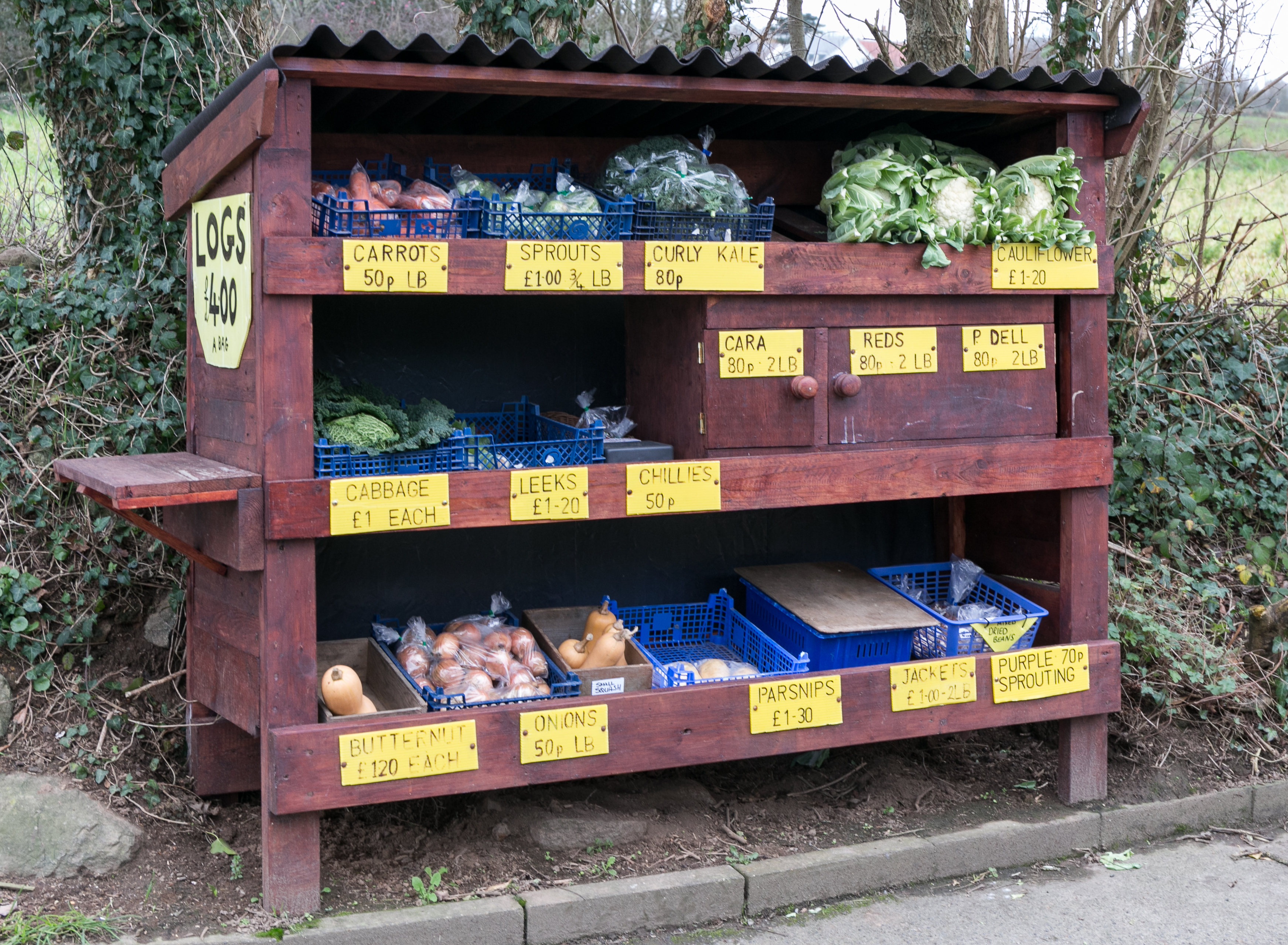Produce
Lets all benefit from the Fruits of our Labours. Well worth the effort!

The purpose of agriculture is to provide food. The final stages for the farmer are to store the produce so that it will last till next season or to get the products distributed to other people to feed them.

Harvesting
The crops are ready, but in a field or tunnel they will feed only slugs. To get them to the right time and place, they must be harvested and stored in conditions that preserve them.
Care must be taken not to damage the crop. Bruises and breaks in the skin are not good for promoting a long shelf life. Pickers should also be aware of ripeness, care for the plant and also for the soil they are walking on.
Good tools are important. There are many tools that are useful for small scale agriculture, often people are not aware of what is available.

Here is an example of an apple picker tool.
Larger farms have access to tractors. These have the three point connectors and power take off that allow the attachment of any harvesting equipment you can imagine or build yourself, with a few bits of metal and a welder. Understanding the job that must be done, through personal
Processing
Crops and other foods must be prepared for use and for sale. This can include cleaning, packaging, or preservation.
Cleaning and other presentational aspects are important if selling a product. People are happier buying food, if it looks clean and presentable. For example, leeks are usually harvested in the winter and they get muddy. The old leaves and leaf tips often have damage and don't look good and the roots often have a lot of earth on them. Removing leek leaves and cutting the leaves to a good shape makes them look better, customers also don't want to buy mud and roots. The removed parts and the soil can stay on the farm and can be composted, recycling and maintaining soil fertility.
Processing for preservation allows a longer life for the produce. It adds value to the produce, allowing for more profit, if selling, and means you will have enough to survive, over the winter, on the farm.
Click the links below to learn about some of the many ways to preserve food:
Making Sauerkraut
Pickling & Fermenting Guide
Packaging
Packaging is a problem all over the world. Not all packaging is unnecessary and not all packaging damages the environment. Organic growers try to avoid packaging, but products must be packaged so that they can not be easily substituted with non-organic products.
Crops like black-currants are small and are easily bruised. Punnets are a common way to package these. It is possible to make small punnets from paper or even woven strips of wood. cellophane is biodegradable and is similar to plastic in its packaging qualities - being see-through and protective. lt was governments around Europe that started to ban cellophane bags. They claimed one factory had hygiene issues... it is time plastic was banned and we demand that governments restore cellophane now!
Selling
Organic produce is different from the "conventionally" grown crops. Quality and nutrition notwithstanding, price also sets organic produce apart.
Organic food is more expensive. This is for a reason: chemical farms get a free ride from fossil fuels that are also heavily subsidised by governments. The chemical farms are also heavily subsidised by them. The myth that organic farmers are rich is a myth, spread by tabloid press which are linked in with the whole fossil fuel, subsidy, and government systems.
Many organic farmers sell their produce direct to the public at market stalls or even the more recent "Farmer's Markets." This is possibly the best option. When selling to supermarkets or distributors, organic farmers are required by law and by the Organic Standards Organisations to mark and package their products as organic. Unfortunately, this packaging is often plastic and this harms the environment.
